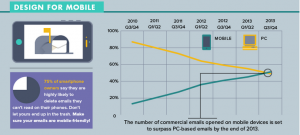— January 15, 2019
The decorations are down, and the kids are headed back to school. After weeks of nonstop rotation, the Christmas music has finally vanished from the radio. Now that the holidays are over, it’s time to catch your breath and relax for a minute…right?
Unfortunately not. If you’re like most retailers, January is going to be dominated by returns.
Most businesses, both in the eCommerce and brick-and-mortar space, see an uptick in returns around this time. According to the National Retail Federation, consumers will return about 11% of all goods purchased over the holidays. FedEx projects the figure closer to 15%, with some industries like apparel reaching return rates as high as 30%. Given consumer spending during the 2018 season hit $ 721 billion, that translates to between $ 79 and $ 108 billion in returns.
Yikes.
As I’ve discussed before, though, returns aren’t the end of the world. With the right strategy, you can easily convert a product return into a new sale. And, as the NRF points out, about 77% of shoppers who return a purchase in the first weeks of the year plan to exchange it for something else.
Holiday Fraud Causes Post-Holiday Chargebacks?
Returns aren’t all you have to worry about during the post-holiday lull, though. If November and December are the holiday season, then think of late-January through February as “chargeback season.”
A seasonal increase in chargebacks is nothing new. In fact, Chargebacks911® notes a regular surge in payment disputes around this time every year. Why, though?
Disputes tend to be most common between 45 and 60 days after the initial transaction. This is partly because cardholders often take a full billing cycle or more before identifying a fraudulent charge, and the holidays are historically a high-time for fraud. Criminals rely on merchants being overrun with sales and unable to dedicate as much due diligence as under normal circumstances. That’s why fraud attacks were found to be 14% higher than the 2018 average between Thanksgiving and Cyber Monday.
Overall, fraud losses are projected to increase 17% between Thanksgiving and Cyber Monday compared to the same period in 2017. Attacks are predicted to have peaked on Thanksgiving, with the dollar value of the average fraudulent purchase up nearly 20% compared to last year.
The Bigger Problem: Buyer’s Remorse
As Chargebacks911’s data shows, though, criminal fraud typically represents less than 10% of all chargebacks. More often, chargebacks are the product of so-called “friendly fraud.” For example, take one of the most common chargeback triggers: buyer’s remorse.
Roughly 52% of shoppers have purchased an item because it was on sale, only to experience buyer’s remorse later. The same figures show the risk of buyer’s remorse increases with consumer age, hitting 64% among Baby Boomers. There’s also a gender divide, as men are more likely to regret a purchase than women (58% compared to 48%). That said, men tend to spend much more on a purchase they say they regret; the average ticket for women sits at just $ 287, compared to a whopping $ 1,589 among male buyers.
Looking at discounted purchases that induced buyer’s remorse throughout 2018, the average amount spent per item was $ 1,006.94. That equates to a whopping $ 132.7 billion in remorseful discounted purchases in just the past year!
Cardholders tend to see chargebacks as a convenient option to overturn a transaction once the standard 30-day return window passes. Even worse, some shoppers use chargebacks to engage in “cyber shoplifting” to get something for free.
The result: more than $ 31 billion in direct losses from chargebacks every year.
As if that wasn’t bad enough, the method Visa uses to calculate your chargeback ratio presents even more problems. With Visa, you divide your current month’s chargebacks by the current month’s number of transactions. If you’re in a low-volume month, but getting slammed with disputes from a high-volume month (as is the case in January), you may end up breaching Visa’s chargeback threshold.
Not Too Late to Stop Post-Holiday Chargebacks
The yuletide surge in sales is great in November and December, but it can easily lead to post-holiday chargebacks come January and February.
It’s a little late to mitigate your criminal fraud risk for the 2018 season. However, there is still time to protect yourself against friendly fraud. That’s why you need to take steps to mitigate your risk now:
- State Your Policies Clearly: Be sure all relevant information, including your return policy, is easy-to-find and understandable.
- Be Consistent: There are times when it’s best to bend the rules. Generally, though, consistency helps establish customer expectations.
- Provide Live Service: Offer live customer service for as many hours a day as possible. When unavailable, use away messages that give customers an estimated time to respond.
- Trust Your Buyer: If the customer tries to return ineligible items, you’ll need to provide photographic evidence and a clear explanation why it can’t be accepted.
- Issue Prompt Refunds: When items come back, either as a return or as undelivered, send an email notice and issue a refund as soon as possible.
- Maintain Detailed Records: Keep track of customer information. This will help you spot patterns in suspicious behavior and provide better service.
- Incentivize Returns: Try offering customers a 10-20% store credit bonus on returns. Not only will it prevent chargebacks, but if can help recover lost sales.
- Fight When Necessary: Be sure your internal team is well-versed in policies and procedures for chargeback representment. Also, remember to monitor closely for industry changes.
The holidays are over, but those post-holiday chargebacks could be right around the corner. You need to act now to protect your sales, your reputation, and the long-term sustainability of your business.
Portions of this post originally appeared here.
Digital & Social Articles on Business 2 Community
(53)






